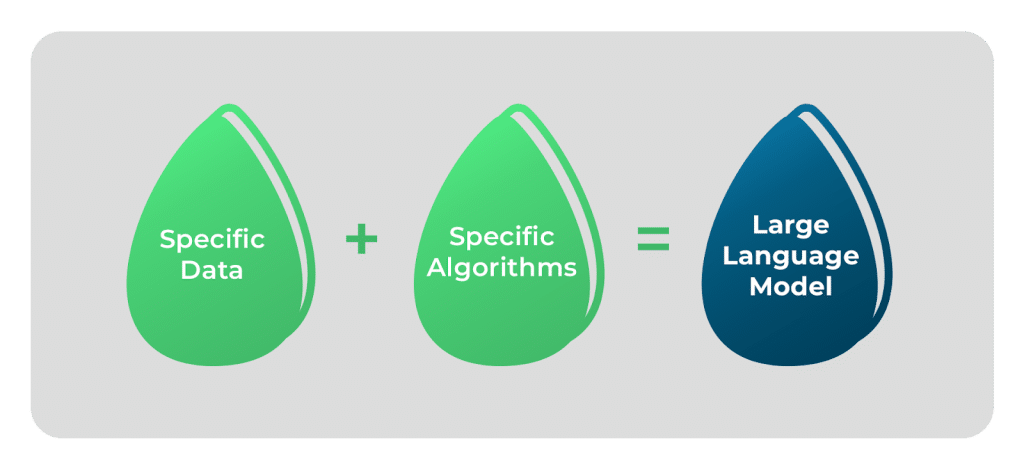Now more than ever, AI has the potential to take the weight of leadership off your shoulders. But there’s a burning question facing church leaders today: How can you use AI ethically in your church?
It’s been just over a year since Chat GPT took off, and the conversation is only speeding up. If you’re like most pastors, you feel AI knocking on your door.
AI can seem new, unclear, and even mysterious in many ways, but the fact is, it will be integrated into every aspect of your life.
What has been clear throughout history is that people and ministries who thoughtfully adopt new technologies flourish. We can ignore this new technology, or we can do everything we can to learn more.
This is a guest post by Josh Burnett, CEO of Church.Tech.
7 Essential AI Terms Pastors Need to Know
These 7 terms will give you a basic understanding of AI, how it works, and what sets one tool apart from the others. This way, you can make more informed decisions about where AI fits in your ministry.
1. Artificial Intelligence
Artificial Intelligence (AI) is a branch of computer science that focuses on creating computer systems and algorithms capable of performing tasks that typically require human intelligence, such as understanding natural language, recognizing patterns, making decisions, and learning from data.
Predictive AI
Like tools that predict the weather or even the end of your Google search, predictive AI has been in common use for many years now. It works by “studying” patterns of past weather or searches (for example) to predict what will come next.
Natural Language Processing
Like AutoCorrect and text assist on your phone. It gives machines the ability to “understand” speech and language the way a human can.
It can commonly be used to summarize large chunks of text.
Generative AI
Like ChatGPT! This AI can create new content and ideas, including stories, images, videos, and music, thus generating new content.
2. Training Data
AI Training Data is exactly what it sounds like—the set or sets of data used to “train” AI learning models.
The machine is offered an input and a corresponding output. After consuming all of this data, the AI can then reliably predict future patterns.
The goal is to turn data into meaningful knowledge that can be used for decision-making, predictions, and understanding people.
Different data sets are used to train AI tools for specific topics. For pastors and church leaders, that can mean the Bible and other faith-based data sets.
For example, ChatGPT might not be the best fit for a pastor because it has been trained on data from many sources like the King James Bible, the Quran, the Torah, and other general online content. That means it could generate content that does not remain true for a Christian pastor’s purpose.
Alternatively, AI tools specifically intended for faith leaders are trained on a restricted set of data. Church.Tech even uses pastors’ own sermons to produce group guides, social clips, and more. In that way, the material is certain to stay true to that pastor’s unique message.
3. Algorithm
Algorithms are the rules and instructions that an AI system uses to analyze data and generate responses.
An algorithm is like a recipe or set of instructions for solving a problem or doing a task. Just like a recipe guides you to cook a specific dish, an algorithm guides a computer on how to perform a specific job.
Computers use algorithms to perform various tasks, from sorting data to playing games or recommending movies. It’s the behind-the-scenes guide that ensures things are done in an organized and effective way.
The more efficient the algorithm, the quicker and better the computer can do its job.
4. Machine Learning
Machine Learning encompasses various types of algorithms designed to enable computers to learn from data. Just like practicing a sport or a game makes you better, machine learning gets better with more examples.
The more data you feed the computer, the better it becomes at recognizing the pattern and “learning” what to do next. That way, when it is being used by users like you, it can take your input and give you what you’re looking for.
It’s another spot to be on the lookout; algorithms have a tendency to develop biases, mostly unintentional, based on the people who write the code or check the outputs.
5. Large Language Model
This is where the training data and algorithms come together.
Different models or tools like ChatGPT give different results because they may have different training data, rules, or both.
Just like our brains help us write and speak based on a combination of our knowledge and training, it is the combination of training data and a variety of instructions for interpreting that data and generating responses that make one AI tool different from another.

6. AI Bias
AI bias, which can also be called machine learning bias, refers to AI systems that produce biased results that reflect and perpetuate human biases within a society, both historical and current.
This happens because of the Training Data, the biases of the developers who create algorithms, and the biases of people who interact with and “correct” the model.
If a machine is trained on data produced by humans, there is a risk that that data could contain human bias, sometimes without the person even knowing it. Once trained on that biased data, the machine reproduces the bias in its output, creating AI Bias.
This highlights the importance of knowing that the data used for machine learning is ethically sourced and properly vetted for bias.
7. ChatBot
Just like language models, chatbots learn by talking to lots of people. They use what they learn from conversations to get better at understanding and responding. It’s like practicing a language to become better at it.
As ChatBots become more common for things like customer service, you’ve probably encountered one if you’ve tried to book an airline ticket or make a doctor’s appointment online in the past year or so. You might not have even noticed!
ChatBots work by utilizing natural language processing and machine learning to answer questions and guide the conversation, based on the conversations the machine has “studied.”
While it can be an easy way to serve customers in certain instances, some ChatBots tend to lack human warmth in conversation.
Bringing AI with Ethics to your Church
In conclusion, knowing the fundamentals is the first step to ensuring the ethical use of AI in your ministry. Before you bring AI make sure you ask these questions:
- Where was the data sourced?
- Was the data given ethically?
- Does the training data align with my church’s beliefs?
If you want to be confident about using AI responsibly, consider Church.Tech. Because our tools were created by church leaders, for church leaders, you know they’re engineered to comply with the most rigorous considerations for ministry.
Though it might surprise you, you can even talk to a human before you make any decisions.
And, if you’d like to discover practical ways you can begin leveraging AI in your ministry today, check out this FREE guide: 25 Ways to Leverage AI.







